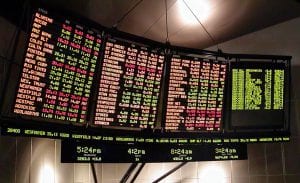
Are ESOPs Good for Employees? The Good and the Bad
Apr 15, 2024
Introduction
In the ever-evolving landscape of employee benefits, Employee Stock Ownership Plans (ESOPs) have emerged as an alluring option for companies looking to boost employee engagement, productivity, and long-term financial success. But are ESOPs truly as good as they seem? Let’s delve into the intricacies of this employee ownership model and explore its potential benefits and drawbacks.
The Essence of ESOPs
ESOPs are employee benefit plans that allow workers to acquire ownership of the company they work for. This is typically achieved through allocating company stock to employees, often at no cost to them. According to the National Center for Employee Ownership (NCEO), as of 2021, there are approximately 6,600 ESOPs in the United States, covering over 14 million participants.
The mechanics of an ESOP involve the company setting up a trust fund and contributing either cash to buy company stock, shares directly to the trust, or money to buy shares from existing shareholders. The shares in the trust are then allocated to individual employee accounts, typically based on factors such as salary, seniority, or hours worked. As employees accumulate seniority with the company, their ownership stake grows, providing them a vested interest in the organisation’s long-term success.
One of the earliest examples of an ESOP in the United States was the Weirton Steel Corporation, which established its plan in 1984 as part of an employee buyout to prevent the company from closing. This move saved over 7,000 jobs and demonstrated the potential for ESOPs to provide a viable alternative to traditional corporate ownership structures, especially in times of economic uncertainty.
Today, ESOPs are found across various industries, from manufacturing and construction to healthcare and technology. Some well-known companies implementing ESOPs include Publix Super Markets, W.L. Gore & Associates (makers of Gore-Tex), and New Belgium Brewing. These companies have demonstrated that employee ownership can be a powerful tool for engaging workers, driving innovation, and promoting long-term financial stability.
While ESOPs have gained popularity in the United States, they are less common in other countries. However, there are signs that this may be changing. For example, in the United Kingdom, the government has introduced tax incentives to encourage the growth of employee ownership, recognizing its potential to boost productivity and economic resilience. As more companies around the world explore the benefits of employee ownership, we will likely see the continued expansion of ESOPs and similar programs in the years to come.
So, are ESOPs suitable for employees and companies alike? The evidence suggests that, when implemented properly, they can be a powerful tool for aligning the interests of workers and management, promoting a culture of ownership and responsibility, and driving long-term success. However, as with any complex financial arrangement, it’s important for companies to carefully consider the potential risks and challenges before embarking on an ESOP journey.
The Allure of Ownership
One of the most compelling aspects of ESOPs is the sense of ownership they instil in employees. As the ancient Greek philosopher Aristotle once said, “What belongs to us by nature, and what we are responsible for, are the things we care about the most.” When employees become part-owners of their company, they tend to feel a greater sense of responsibility and motivation to contribute to its success.
Real-world examples of this phenomenon abound. Take New Belgium Brewing, a craft beer company based in Colorado. In 2013, the company became 100% employee-owned through an ESOP. Since then, New Belgium has consistently been ranked as one of the best places to work in the United States, with employees citing a strong sense of pride and ownership in their work.
Another alluring aspect of ESOPs is the potential for long-term financial benefits for employees. As the company grows and becomes more profitable, the value of the stock held by the ESOP trust increases, which can translate into significant wealth-building opportunities for participants.
This concept aligns with the philosophy of Benjamin Graham, the legendary investor and mentor to Warren Buffett. Graham believed in the importance of long-term, value-based investing, stating, “In the short run, the market is a voting machine, but in the long run, it is a weighing machine.” ESOPs encourage employees to think like long-term investors, focusing on the company’s fundamental value rather than short-term fluctuations in stock prices.
Tax Advantages for Companies ESOPs also offer significant tax advantages for companies. Contributions to an ESOP are tax-deductible, and in some cases, companies can even defer or avoid paying capital gains taxes on the sale of stock to the ESOP trust. These tax benefits can provide a powerful incentive for companies to adopt an ESOP structure.
A notable example is W.L. Gore & Associates, the company behind Gore-Tex fabric. Since 1974, W.L. Gore has been employee-owned and has consistently been ranked as one of the most innovative and successful companies in the world. The company’s ESOP has played a significant role in its long-term success, providing a stable ownership structure and financial benefits for the company and its employees.
Potential Drawbacks and Risks
Despite the many alluring benefits of ESOPs, it’s important to acknowledge potential drawbacks and risks. One concern is the lack of diversification in an employee’s investment portfolio. If a significant portion of an employee’s retirement savings is tied up in company stock, they may be exposed to greater financial risk if the company experiences a downturn.
This risk is exemplified by the case of Enron, the energy company that collapsed in 2001 amid a massive accounting fraud scandal. Many Enron employees had their retirement savings heavily invested in company stock through the company’s ESOP-like plan. When the stock price plummeted, they lost a significant portion of their life savings.
The Wisdom of Contrarian Investing
To mitigate these risks, employees participating in ESOPs should consider the wisdom of contrarian investing, as espoused by legendary traders like George Soros. Soros is known for his “reflexivity theory,” which suggests that market participants’ biased perceptions can influence market trends, creating opportunities for contrarian investors who are willing to bet against the crowd.
In the context of ESOPs, this means that employees should not blindly follow the crowd and assume that their company’s stock will always perform well. Instead, they should take a critical, objective look at the company’s fundamentals and make informed decisions about their investment strategy.
The Bandwagon Effect and Employee Engagement
Another potential risk of ESOPs is the “bandwagon effect,” a social phenomenon where people tend to follow the actions and beliefs of others, even if they may not align with their own best interests. In the context of ESOPs, this could manifest as employees becoming overly optimistic about the company’s prospects, leading to unrealistic expectations and potentially risky financial decisions.
To counter this, companies with ESOPs should prioritize transparent communication and education about the risks and rewards of employee ownership. Companies can foster a culture of engaged, responsible employee-owners by empowering employees with the knowledge and tools to make informed decisions.
The Philosophical Perspective
The concept of employee ownership has deep philosophical roots. In the 4th century BC, the Greek philosopher Plato argued in his work “The Republic” that a just society is one in which each person performs the role they are best suited for and shares in the rewards of their labour. In many ways, ESOPs embody this ideal, giving employees a direct stake in the success of the company they work for.
More recently, the philosopher John Rawls, in his influential work “A Theory of Justice” (1971), argued for the importance of fairness and equality in social and economic institutions. Rawls’ “veil of ignorance” thought experiment suggests that a just society is one in which people would choose to live, even if they didn’t know their place in that society. ESOPs can be seen as a step towards creating a more just and equitable workplace by providing employees with a fair share of the company’s success.
Conclusion
ESOPs offer an alluring array of benefits for employees and companies, from fostering a sense of ownership and engagement to providing long-term financial rewards. However, it’s crucial to approach employee ownership with a clear understanding of the potential risks and drawbacks and to make informed decisions based on a thorough analysis of the company’s fundamentals.
By drawing on the wisdom of philosophers, legendary traders, and market psychology principles, we can navigate the complex landscape of employee ownership and unlock its full potential. As more companies explore the allure of ESOPs, it’s clear that this innovative model of employee engagement and wealth-building will continue to shape the future of work in the years to come.
The question of whether ESOPs are suitable for employees and companies is not a simple one, as the answer depends on various factors, including the specific structure of the plan, the financial health of the company, and the overall economic climate. However, when implemented thoughtfully and strategically, ESOPs have the potential to create a more equitable, engaged, and prosperous workforce.
As we move forward into an increasingly uncertain economic future, it’s more important than ever for companies to explore innovative ways to align the interests of employees and shareholders. ESOPs offer a compelling model for achieving this goal, which has been proven successful by many companies across various industries.
Ultimately, implementing an ESOP should be based on carefully considering each organization’s unique needs and goals. By taking a holistic, long-term view and prioritizing employee well-being alongside the company’s financial success, businesses can unlock the full potential of employee ownership and create a more resilient, dynamic, and equitable economy for all.
Diverse Views: Compelling Insights
Zero Percent Mortgages Debut: Setting the Stage for Next Bull Market
Brexit’s Currency Wars: Hidden Theme for Financial Freedom
Surviving the Bear Stock Market: What’s New for Investors?
Fed Interest Rate: Negative Rates Are A Game Changer
What Economic Recovery? Most Americans Lack $1000 In Savings
Federal Reserve Interest Rate: Dangers & Benefits of Negative Rates

Why Are Interest Rates So Low: Coronavirus That’s Why
CAT Stock Price Projections And Future Trends
Why own gold in uncertain times: Protection From Disaster
HD stock quote And future price trends
Valeant Shares Slump



